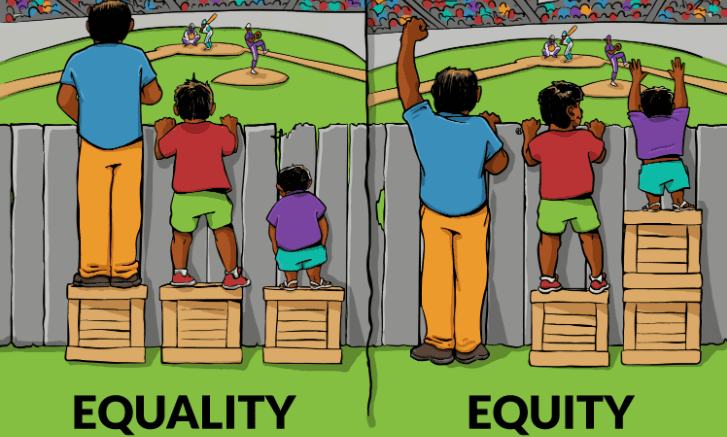–
Last summer, USA Today printed an article titled “Segregated parks linked to higher COVID-19 deaths for Black and Latino Americans.” This article was based off recent research that found across the United States that Black citizens and those with lower incomes have access to less acreage of parkland than whites and those with higher incomes. The USA Today article took that research one step further and suggested that the lack of access to parks can lead to higher risk of heart disease and obesity due to lack of exercise opportunities and could be contributing to the underlying health conditions that are leading to disproportionate rates of COVID-19 infections and deaths of Black and Latinx people.
In a few recent articles on this website we have emphasized the benefits that parks play on improving health along with bringing higher property values, and reducing crime rates. It would seem profoundly inequitable to provide more of those benefits to white or higher income citizens than to Black or low-income citizens. The USA Today article indicates that this sort of systemic racism has creeped into our park lands nationwide.
In Baltimore, history provides numerous instances of systemic racism that has pervaded our city and our park system. Such racism includes housing discrimination by precluding Black citizens from receiving home loans in certain areas of Baltimore, segregation in our park system and investment in white neighborhoods over Black communities. Given this history, it would not be surprising if Baltimore’s park system provided more acres of parkland to white residents than Black residents.
Despite Baltimore’s history of inequitable treatment of Black citizens, Baltimore is actually defying the national trend when it comes to its parks. A 2009 study titled Parks and People: An Environmental Justice Inquiry in Baltimore, Maryland looked at whether inequities exist in Baltimore based on access to parks. In that study, the authors found that in Baltimore City, neighborhoods with greater than 75% Black residents had equal access to the same number of acres of parkland as neighborhoods that were greater than 75% white. In addition, the neighborhoods with the highest need for parks had the best access to parks. Residents with the highest needs were defined as “children, the elderly, the car-less, and low income neighborhoods.” In a city that often receives criticism for its treatment of Black and low-income residents, this data is pleasantly surprising and suggests that the park systems core infrastructure is available to all residents – especially those with the greatest needs.
Although Baltimore has bucked the national trend by providing equitable access to parkland for its neediest citizens, that does not mean that Baltimore has taken advantage of that equitable infrastructure. Instead, Baltimore has consistently failed to adequately fund its Recreation and Parks Department. As mentioned in a recent article about Patterson Park, Baltimore’s operations spending in its Recreation and Parks Department is more than three times less than comparable high-density cities. The below graph illustrates this large disparity. This lack of funding impairs Recreation and Parks ability to deliver the full benefits of parks to its neediest residents.

Regardless of the chronic underfunding of the Recreation and Parks Department, equitable access to parks for Baltimore’s neediest citizen should be celebrated. Certainly, a solid foundation for Baltimore’s park system exists. Now Baltimore needs to build on that foundation and fund our Recreation and Parks Department to a greater degree. Only then will Baltimore be able to take advantage of the equitable distribution of its parks and benefit Baltimore’s neediest residents.
–
–

Be the first to comment on "Is Baltimore’s Park System Equitable?"